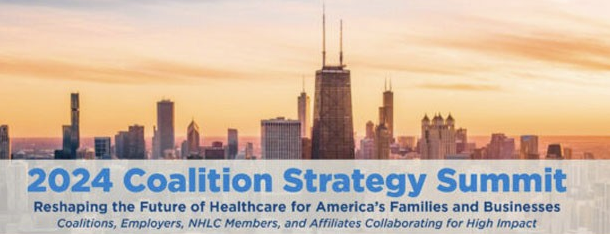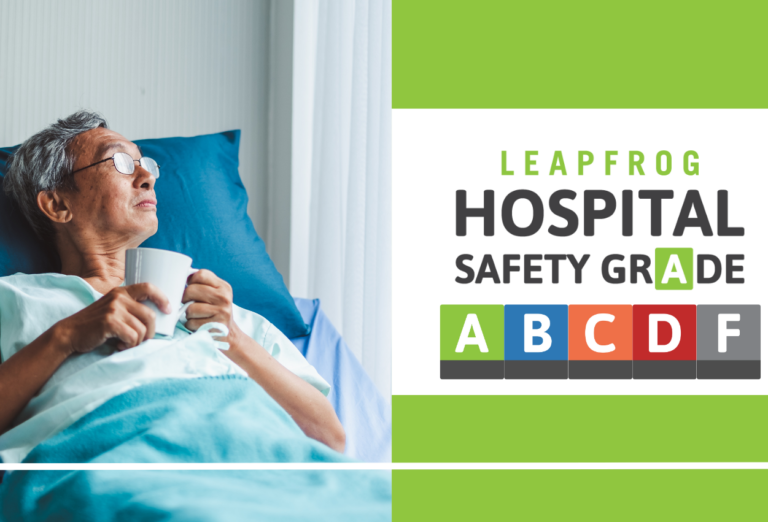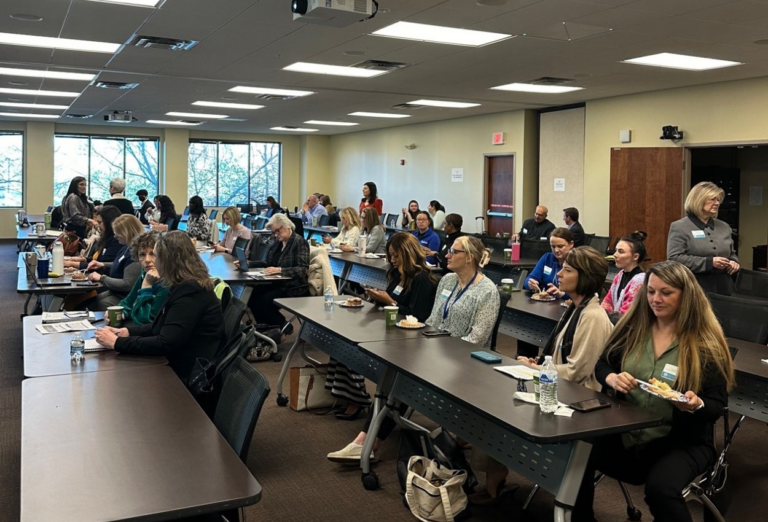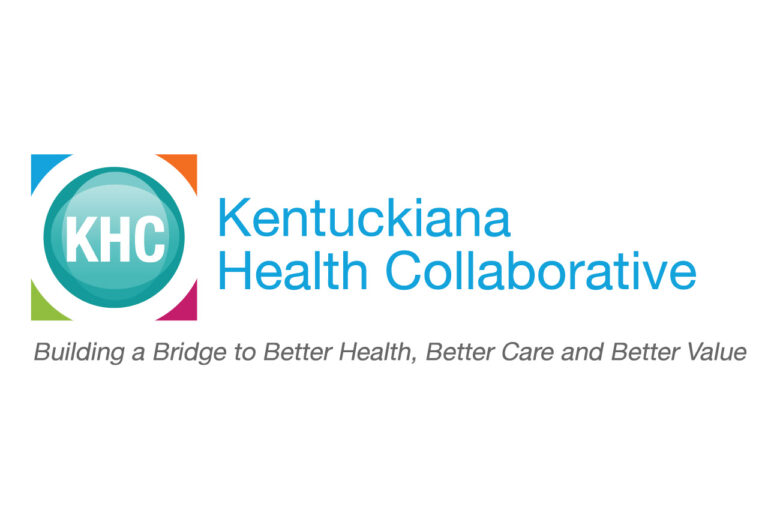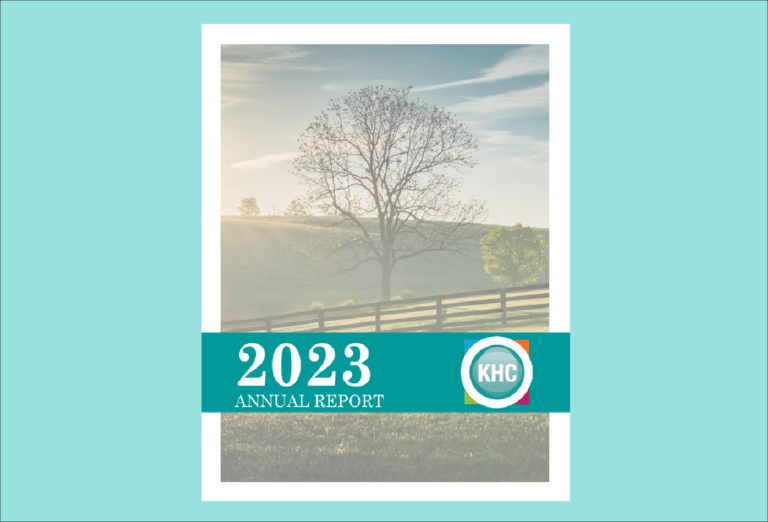Featuring a day jam-packed with engaging presentations and panels, the KHC 2019 Annual Conference was a success in highlighting the changes needed to help community members get access to timely, appropriate mental health services and treatment, through the latest advancements in value-based behavioral healthcare.
We packed a ton of great content into a small amount of time, so we didn’t get to all of the questions submitted by participants on our web application.
Let’s remedy that.
The KHC has spent the last couple of weeks following up with speakers on these questions, and we’ve compiled them below. Note that some answers have been edited for space.
“For Mental Health, Let’s Act Before Stage 4”
Paul Gionfriddo | President and CEO | Mental Health America
In other countries they have programs to integrate mental health treatment and the community. What do you think the barriers are to doing that in the US?
We tend to favor the system with which we have the most experience. In the United States, that has been characterized by separate and unequal care, first in state hospitals, now in jails and prisons, for people with mental illnesses. Our challenge is to change the way we think about mental health conditions, because thinking about them as public safety concerns (i.e. dangerous to self or others) makes it hard to fully integrate the services and treatment for them into the community.
How do we get people to seek treatment without the fear of retribution or ostracization?
First, we should screen everyone for mental health conditions as ubiquitously as we screen for blood pressure in adults, and hearing and vision in children. That’s what’s recommended for everyone over the age of 11 by the U.S. Preventive Services Task Force, but it’s just not done. By screening, we normalize mental health and mental health care and make this a part of overall health and health care. And then we can treat right away when it’s warranted, instead of letting up to ten years pass between the emergence of symptoms and getting the right diagnosis and treatment.
“Roadmap for Employers to Achieve High Value Behavioral Healthcare”
Mike Thompson | President and CEO | National Alliance of Healthcare Purchaser Coalitions
The National Alliance recommends ensuring health plans have network adequacy for behavioral health services. How is this best measured?
Most health plans have directory of network psychiatrists. However, few know whether those psychiatrists are taking new patients – ask them, by specialty if possible (eg child psychiatrists), what percentage of network behavioral health specialists are taking new patients.
Most health plans measure access to network providers by driving distance but few know or monitor how long it takes to schedule an appointment – ask them, by specialty if possible, what is the average wait time for an appointment for a new patient?
Most health plans will indicate that it is difficult to get behavioral health specialists to join networks but few have taken a positive step toward change this trend – ask them, by specialty if possible, how do network reimbursement rates for behavioral health specialists compare to non-behavioral health specialists? How do network reimbursement rates compare to out-of-network charges for behavioral health specialists? What is you plan to improve network participation rates of behavioral health specialist?
What do you think has shifted within our world society to now have this be recognized as a top 5 issues when it’s always been perceived as a personal and economic issue?
Three things that have contributed to Mental Health rising to be among the top issues facing companies and organizations globally:
1) growing recognition of the huge and disproportionate economic impact of the issue to companies and societies, well beyond the costs of treatment (e.g. impact on co-morbidity, impact on productivity. Impact on caregivers).
2) growing understanding of the physical and environment underpinning of behavioral health issues (genetics, social determinants and trauma, brain science) as well as how to prevent and treat it.
3) cultural change giving a growing voice to its wide prevalence and new acceptance as a human condition rather than a character flaw. This has been led by advocates, celebrities, businesses and policy makers.
“Unaddressed Drivers of Poor Mental Health (PANEL)”
Aja Barber | Community Health Administrator, Center for Health Equity | Louisville Metro Dept of Public Health
When is the next Health Equity Report slated to be released?
In keeping with the timeline so far, we’re anticipating releasing a 2020 or 2021 Health Equity Report.
From the CHE perspective, what can be done on a policy level to help close mental health disparities throughout our community?
We’re currently in process of building the legislative agenda for Public Health & Wellness so I don’t have a specific answer to this yet. But I do believe policies ensuring physical and mental healthcare as a guaranteed right for every individual are critical first steps.
Danesh Mazloomdoost, MD | Founder | Wellward Regenerative Medicine
What can we do as community members, professionals, and advocates for change to get the appropriate word out about the model that Wellward works off of?
Wellward looks for opportunities to work with the community and educating both patients and clinicians on this paradigm shift in addressing painful conditions. Any opportunity to speak or inform the public about Fifty Shades of Pain would be welcomed. While the book became an international bestseller, any purchase or review helps boost its visibility to the public, even a $0.99 Kindle purchase does a lot. Our goal is to simply create greater awareness about sustainable ways to think about pain in improved the health of our community such that pain problems become less prevalent. Your assistance in spreading that message in any capacity is helpful.
“Incenting Recovery Rather than Relapse through Bundled Payments (PANEL)”
Kelly Clark, MD | Founder, Addiction Crisis Solutions | President, American Society of Addiction Medicine
David Smith | Founder| Third Horizon Strategies
In a bundled payment model for medications treatment for Opioid Use Disorder, what non medicine therapies should be included?
Clark: In the PCOAT payment model, medications themselves are not core services/products being delivered. The core elements to be covered are those consistent with the ASAM Guidelines for Use of Medications in the Treatment of Addiction Involving Opioids: Medical services for diagnosis, treatment planning and medication management; core psychosocial interventions including the levels of counselling which can be done by the prescriber with sufficient time and expertise; and care coordination activities. There are different approaches in this bundle, depending on the capacity and capabilities of the provider/provider group. More information can be found here.
Smith: We would be deferential to the professionals empaneled to provide care for the patient. The entire ARMH-APM turns on the axis of a treatment and recovery plan that addresses a range of mental and social considerations (in addition to clinical) that support a patient’s recovery. The clinical professionals and support teams that work with the patients are required to work with the patient in identifying specific therapies, in addition to addressing exogenous determinants that would interfere with the recovery plan and facilitate resources accordingly. The concept APM does set general guidelines regarding the need for evidence-based approaches to therapies holistically, but we also believe that the payment mechanism and the associated risk will play a role in motivating the underlying delivery system to provide non-medical services and therapies in a way that will sustain impact.
How do we move to a model that values quality care and implements metrics around performance?
Clark: We start by defining quality and performance. We can use the Triple Aim concept of Value = Quality/Cost, but quality of care in medical systems is an ever-expanding construct…Beginning by ensuring baseline process measures are used to ensure standards of care are being met – we don’t want to incent performance of cost savings by allowing care considered not to meet baseline standard of care quality metrics…Next, we need to consider the goals of managing chronic diseases: Decreased disease related morbidity, early mortality, total cost of care, and increased functioning/quality of life…To be operationalized, “Quality” is a very granular concept, and we must move boldly ahead to save lives.
Smith: It’s a collaborative enterprise and requires a payer to lean into a payment model that provides adequate resources for care that has a long-term orientation and supports the delivery system in its integration for the purpose of a more seamless patient experience. Our approach is to facilitate this through a risk-bearing provider entity capable of centrally managing a care team and the associated care transitions through a network of providers that engage the patient based on need and subsequently (or initially, depending on the patient) supports the patient’s assimilation back into their environment (or a new environment depending on the underlying circumstances).
Why don’t all clinics require counseling along with the administration of these medications? How is a patient supposed to differentiate between these clinics?
Clark: In an ideal world, people with any disease would have access to whatever interventions they need to help them manage their chronic disease at the time they need it, and also have access to things which would possibly benefit them. In the case of addiction, an individual at one point in time may require 24-hour care in addition to ongoing medication management, or require intensive outpatient care at another point in time, or require no further outpatient services than meetings with their prescriber. There is no one size fits all…
We do not expect people with brain or other diseases to “talk their way out of their illness.” The currently available data we have for opioid addiction does not show improved outcomes by adding 60-minute formal counselling sessions to the regular physician medication management visits (which include supportive counselling and other techniques)…And forcing people into higher than needed levels of care does not improve outcomes – I have seen it simply discourage them from receiving the care they do need. Finally, there are structural and payment barriers to providing psychotherapy (done by licensed masters level professionals) in the same offices as prescribers which include licensing and payment issues as well as a shortage of either psychotherapists or counselors of lower educational requirements.
Patients and their families currently have few ways to determine the quality of care being provided by any provider or program. The ASAM/CARF certification, as well as the proposed Shatterproof rating system, are looking to make information about programs more transparent by means of independent site surveys (ASAM/CARF) or provider/patient/payer data collection (Shatterproof).
Patients with opioid addiction and their families can look here for information:
http://eguideline.guidelinecentral.com/i/706017-asam-opioid-patient-piece/0?
Where are these programs being piloted?
Clark: The P-COAT model does not currently have formal piloting occurring, but it does delineate the types of bundled payment approaches which are already being provided in some communities by forward thinking health plans working with engaged providers.
Smith: Like everything in health care, we are living under our potential. We don’t get the results we pay for and have developed a delivery system that receives enormous financial benefit when patients have a recovery disruption or cycle through recovery. Our perverse incentives prevent us from driving the type of alignment across this diffuse ecosystem of resources that does a tremendous disservice to patients and their families.
Are recovery models serving people equally across socio-economic levels, including the homeless?
Smith: Today, no, not generally (in my opinion). This is where we need to go. Most Americans can access some form of coverage (non-expansion states notwithstanding). Even for those Americans unable to access coverage, the financial burden of addiction on our entire emergency infrastructure creates an economic rationale for society to provide these services. If we build a delivery model that supports this and link patients under the auspices of their coverage/non-coverage considerations, an underlying economic calculus that isolates value for parties (government, society, payer, etc.) should be a catalyst for establishing the right access to services for patients.

